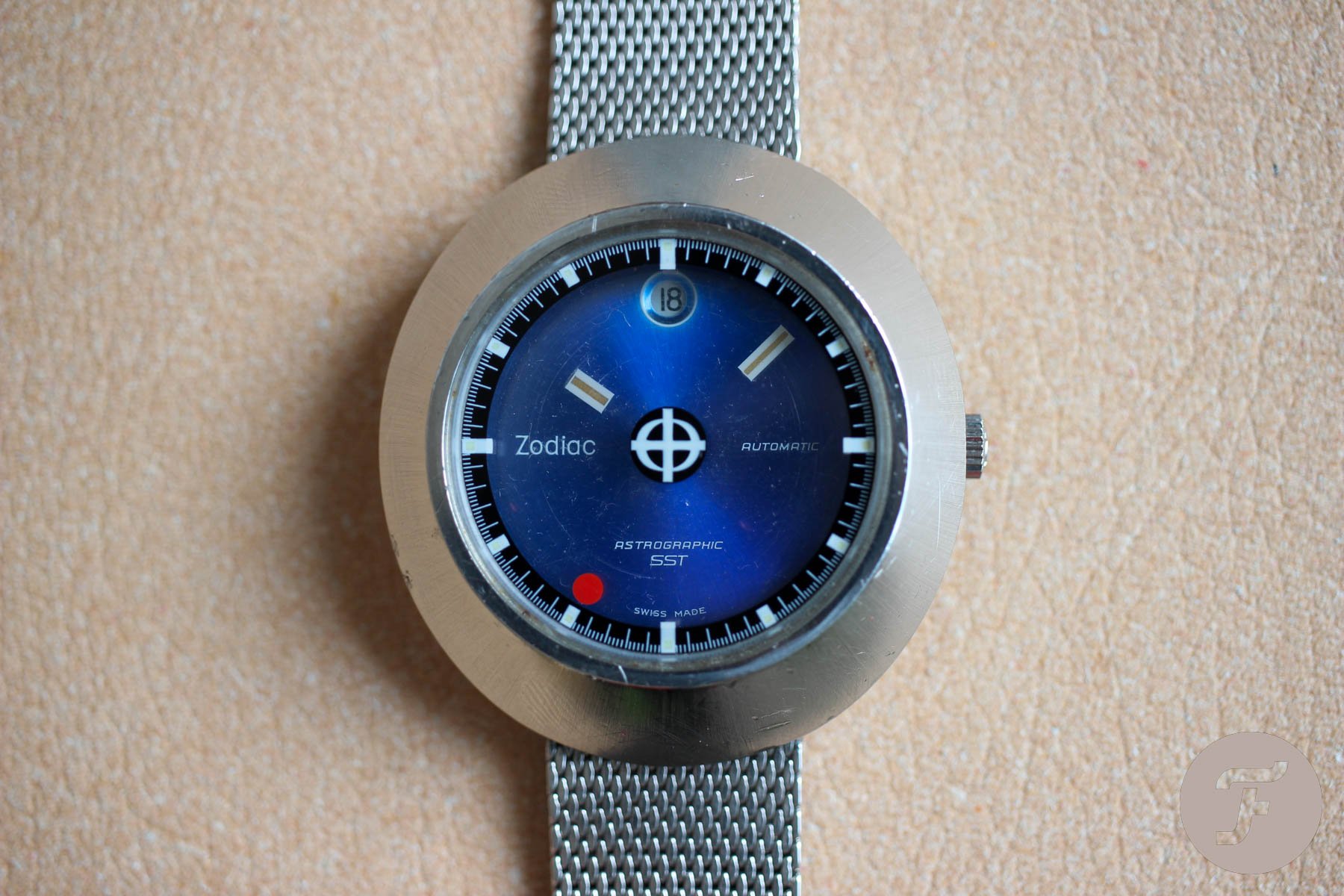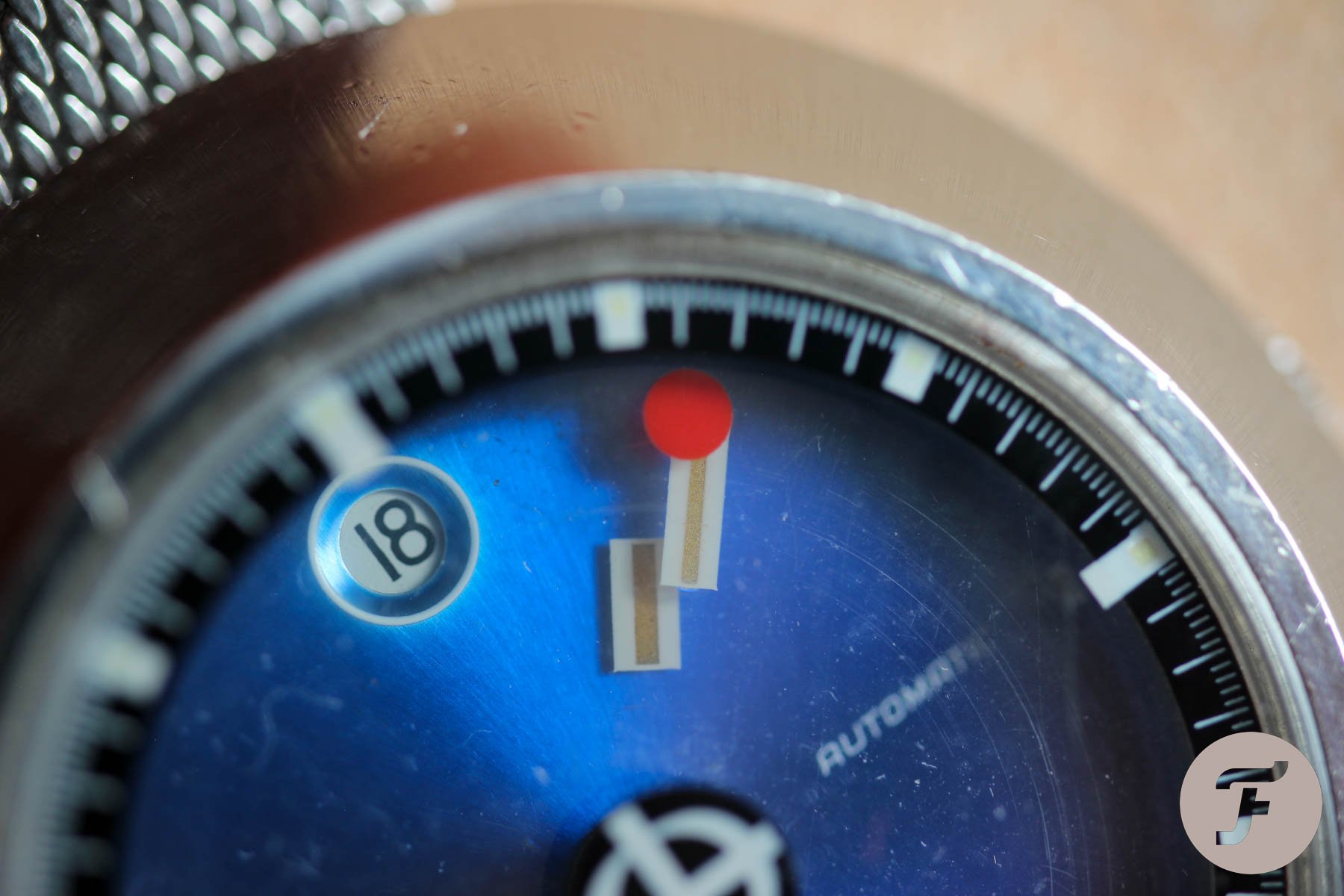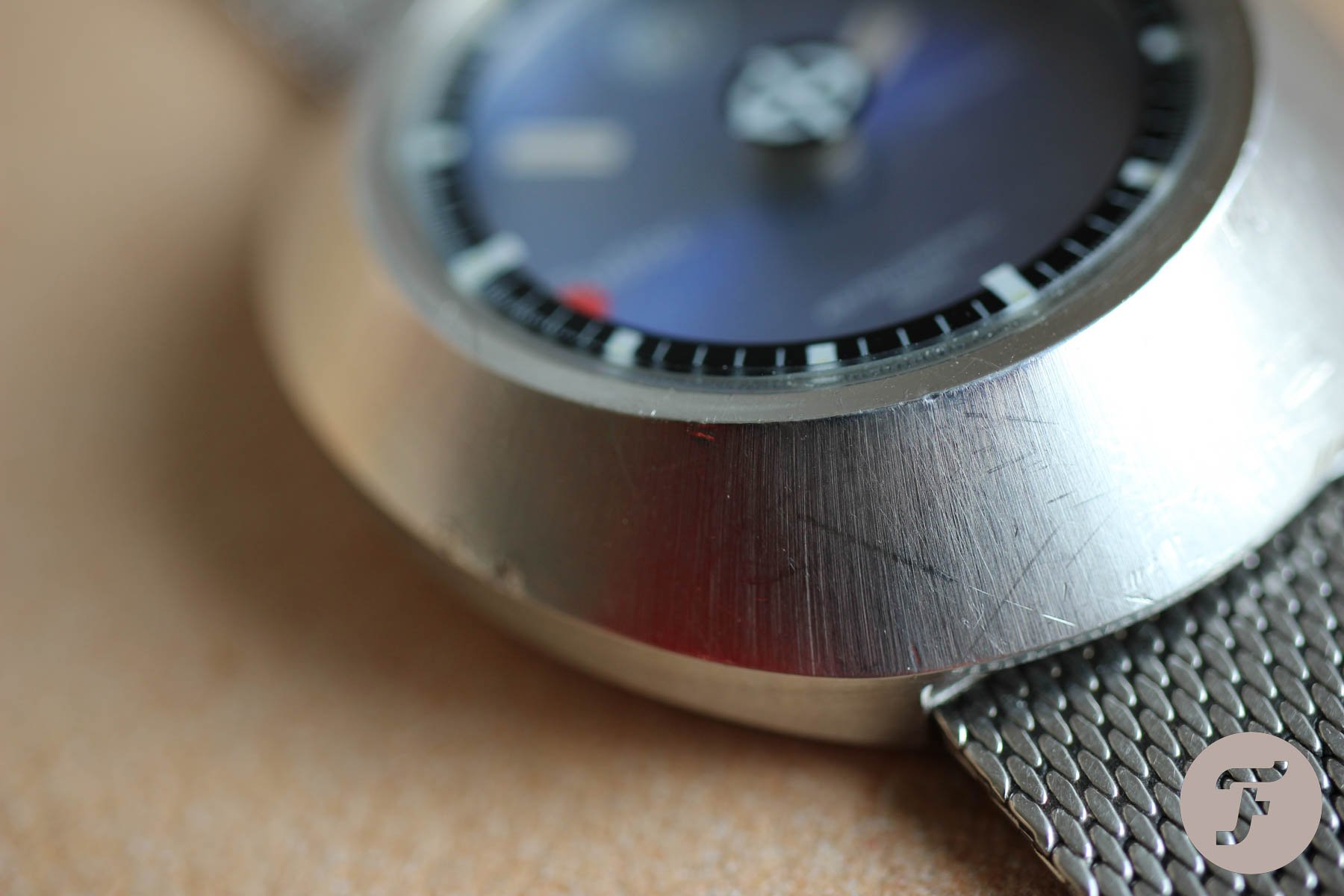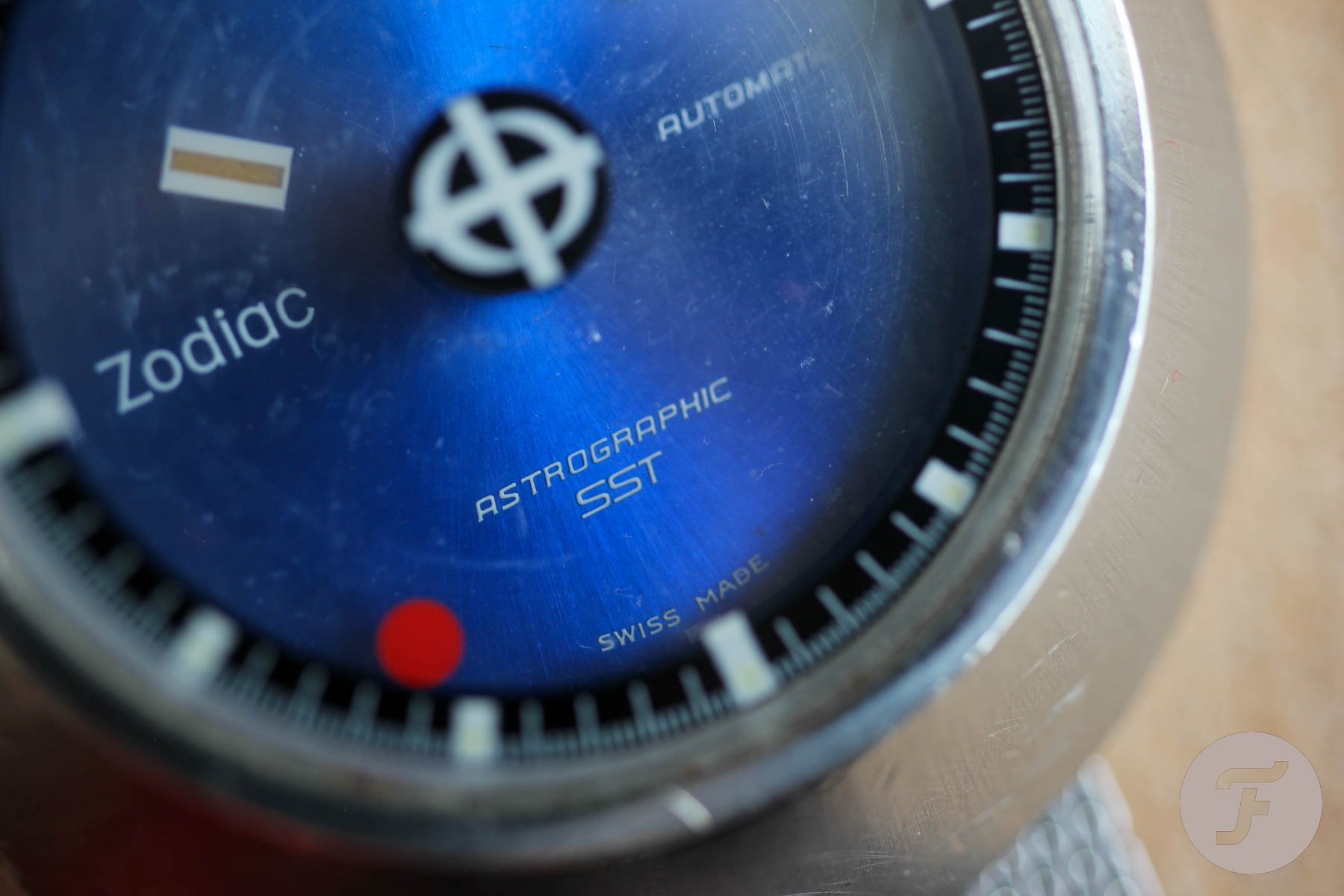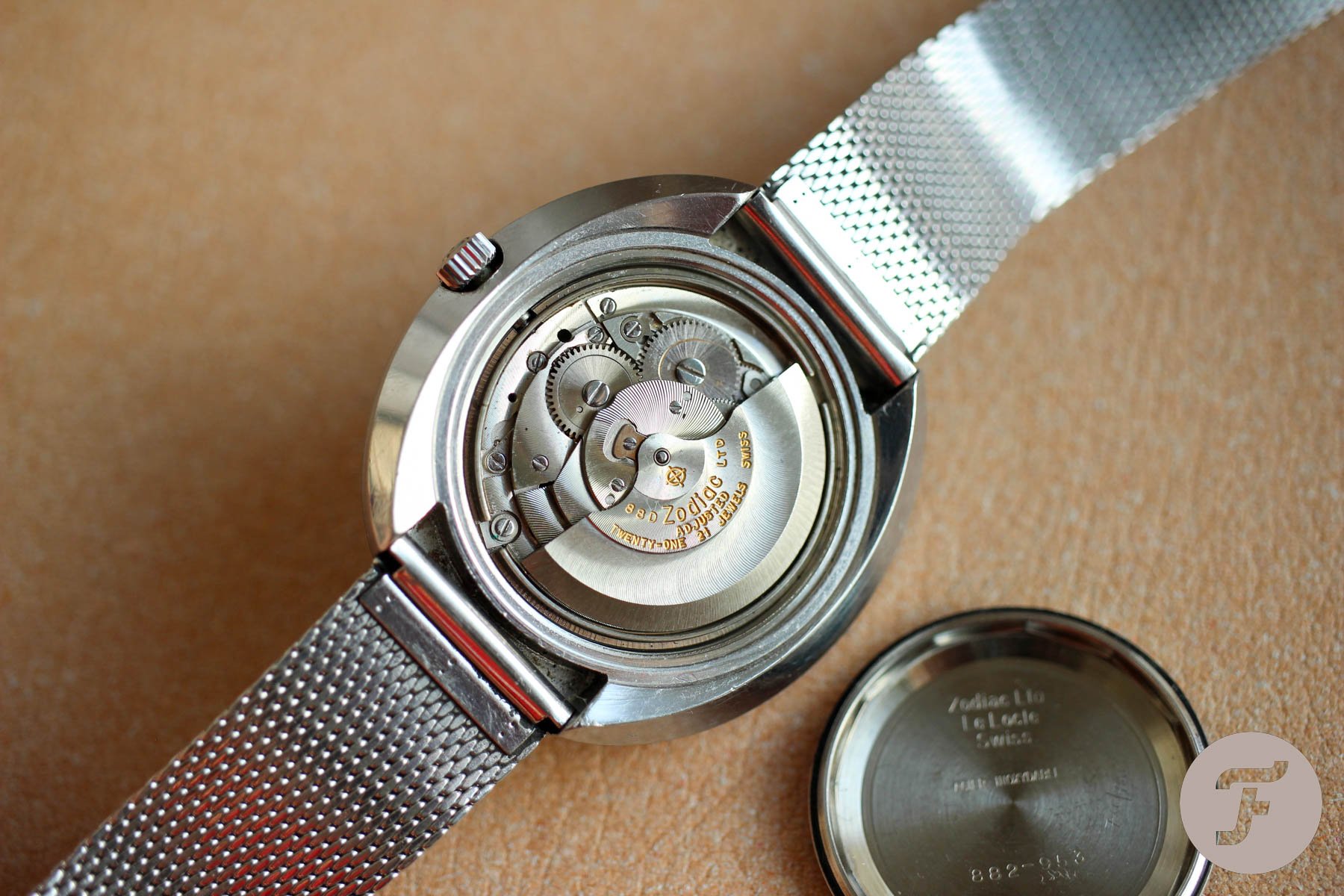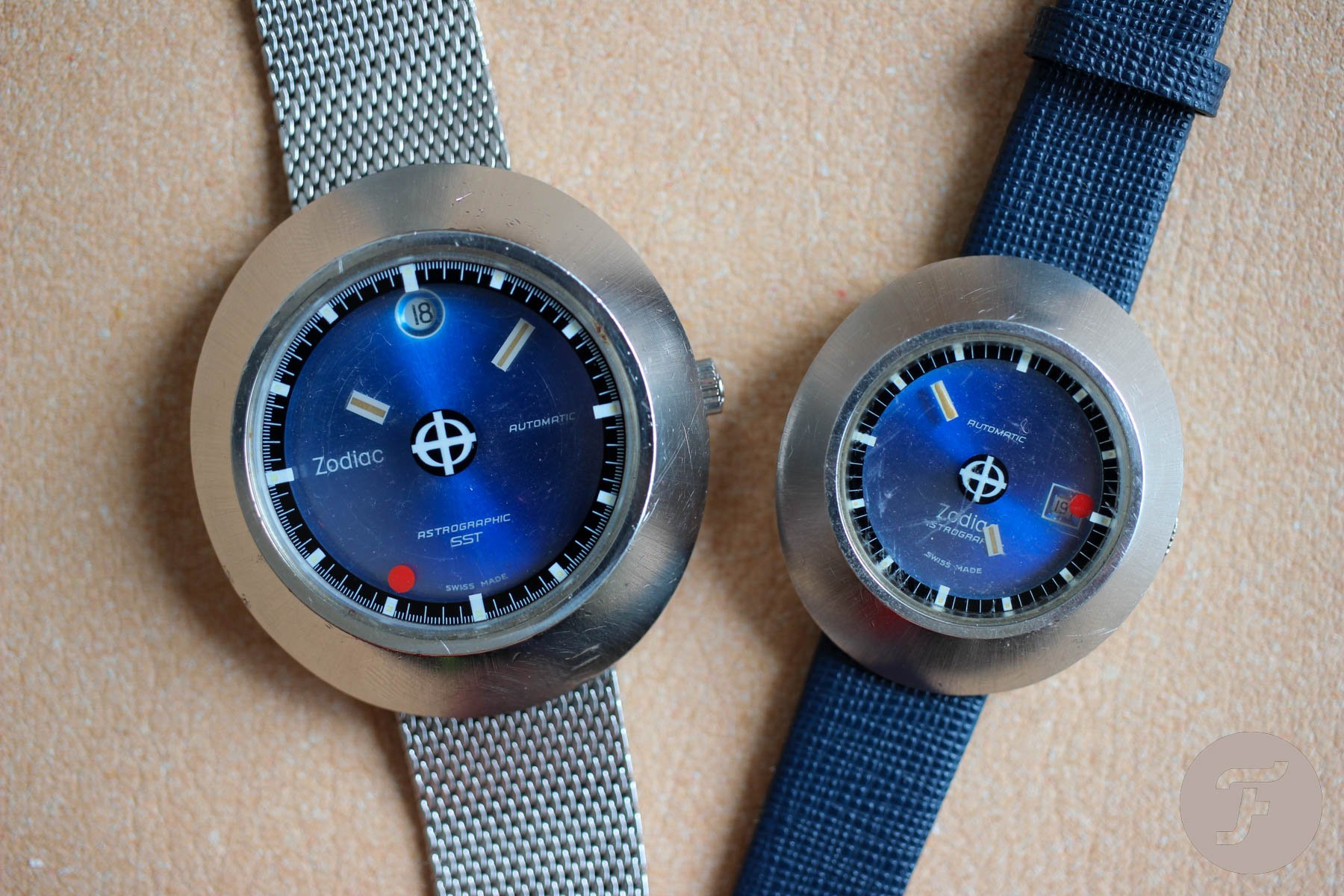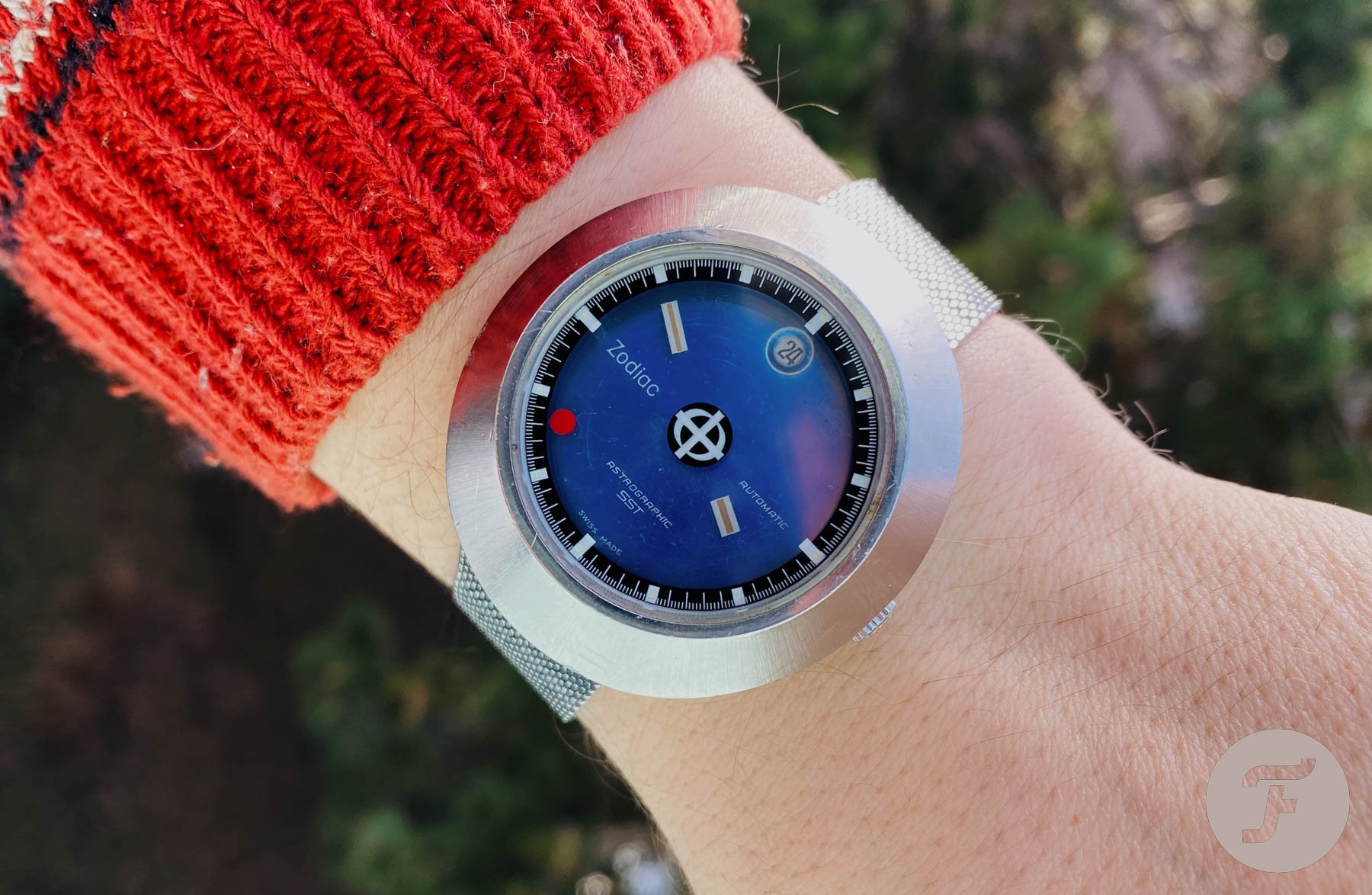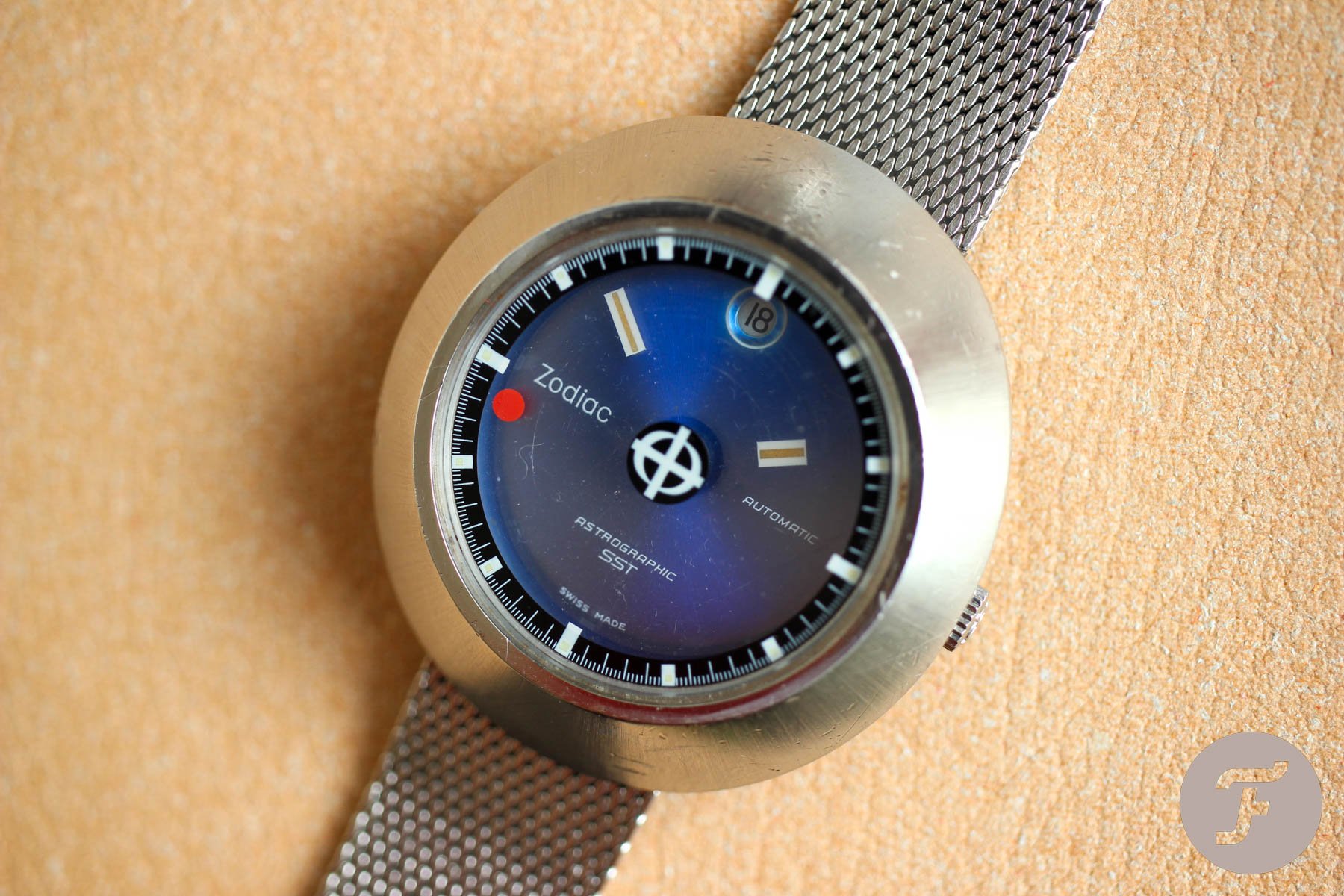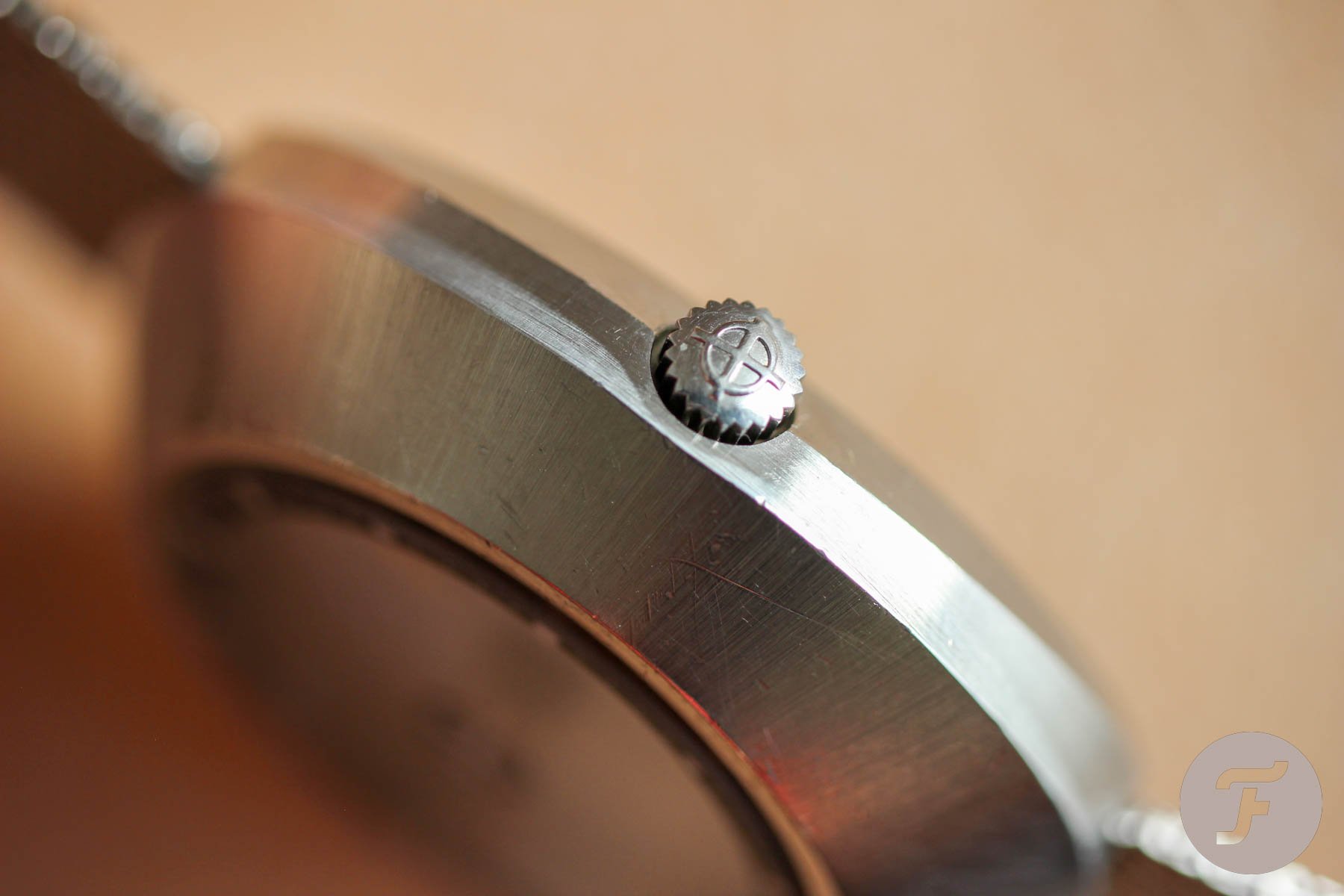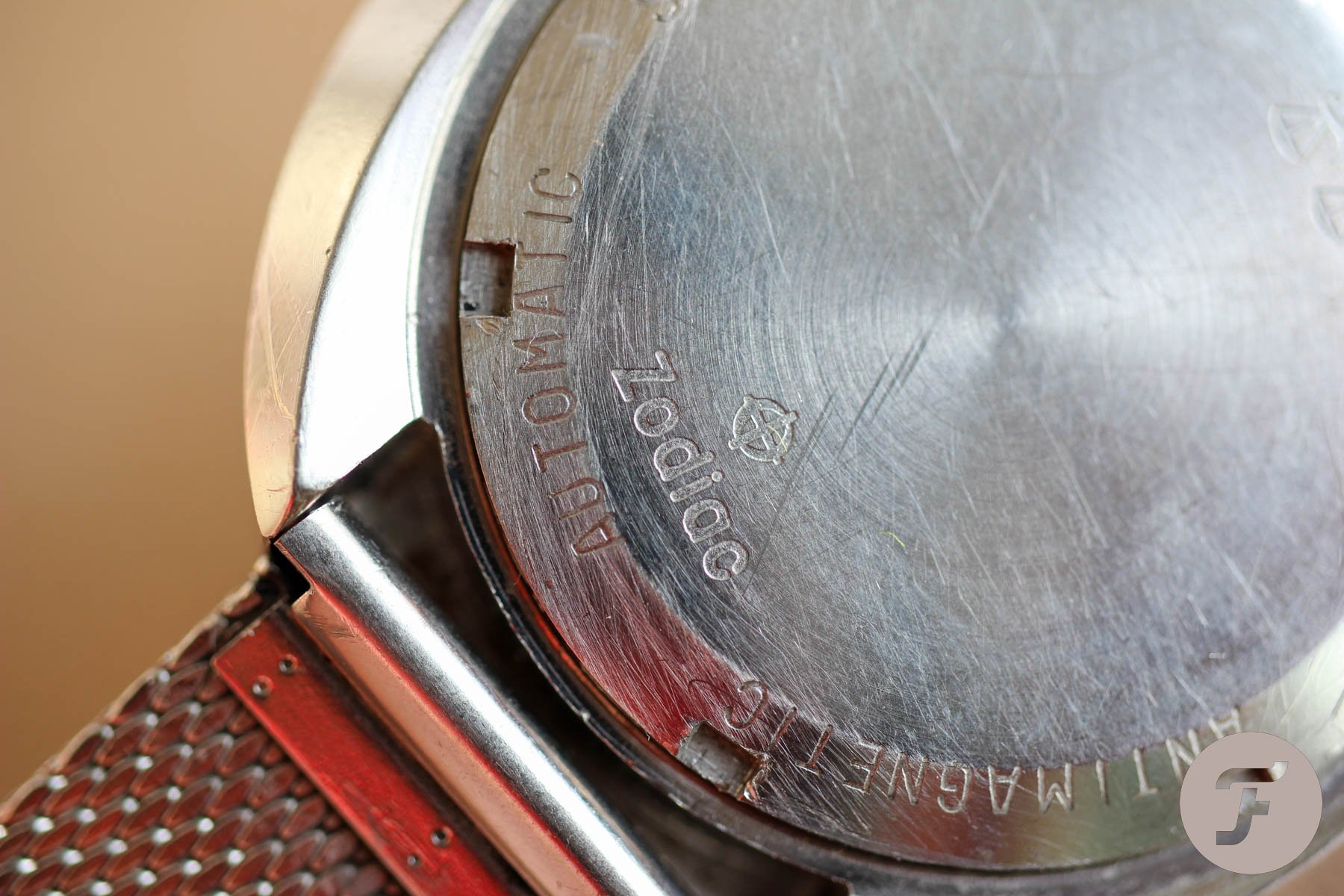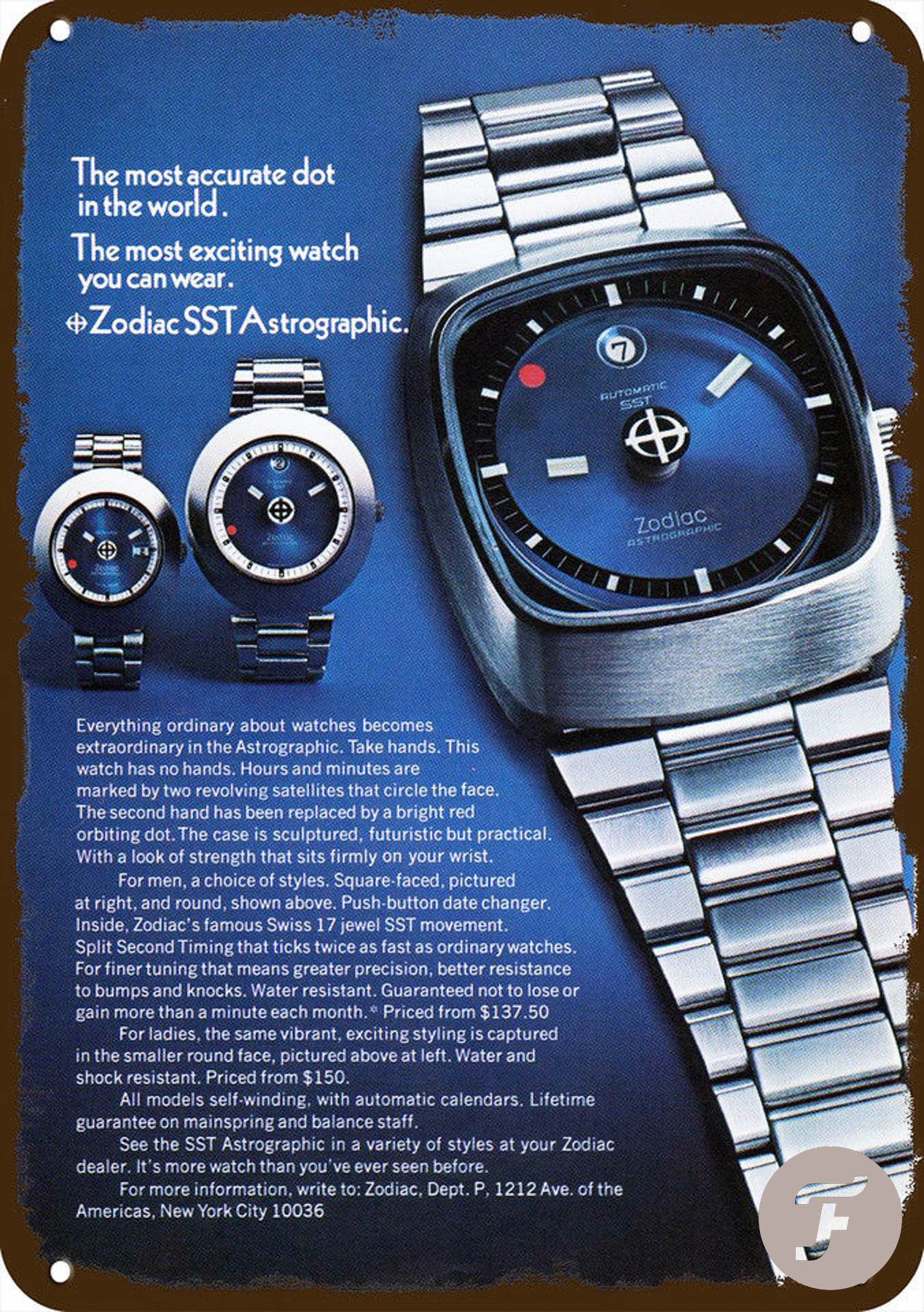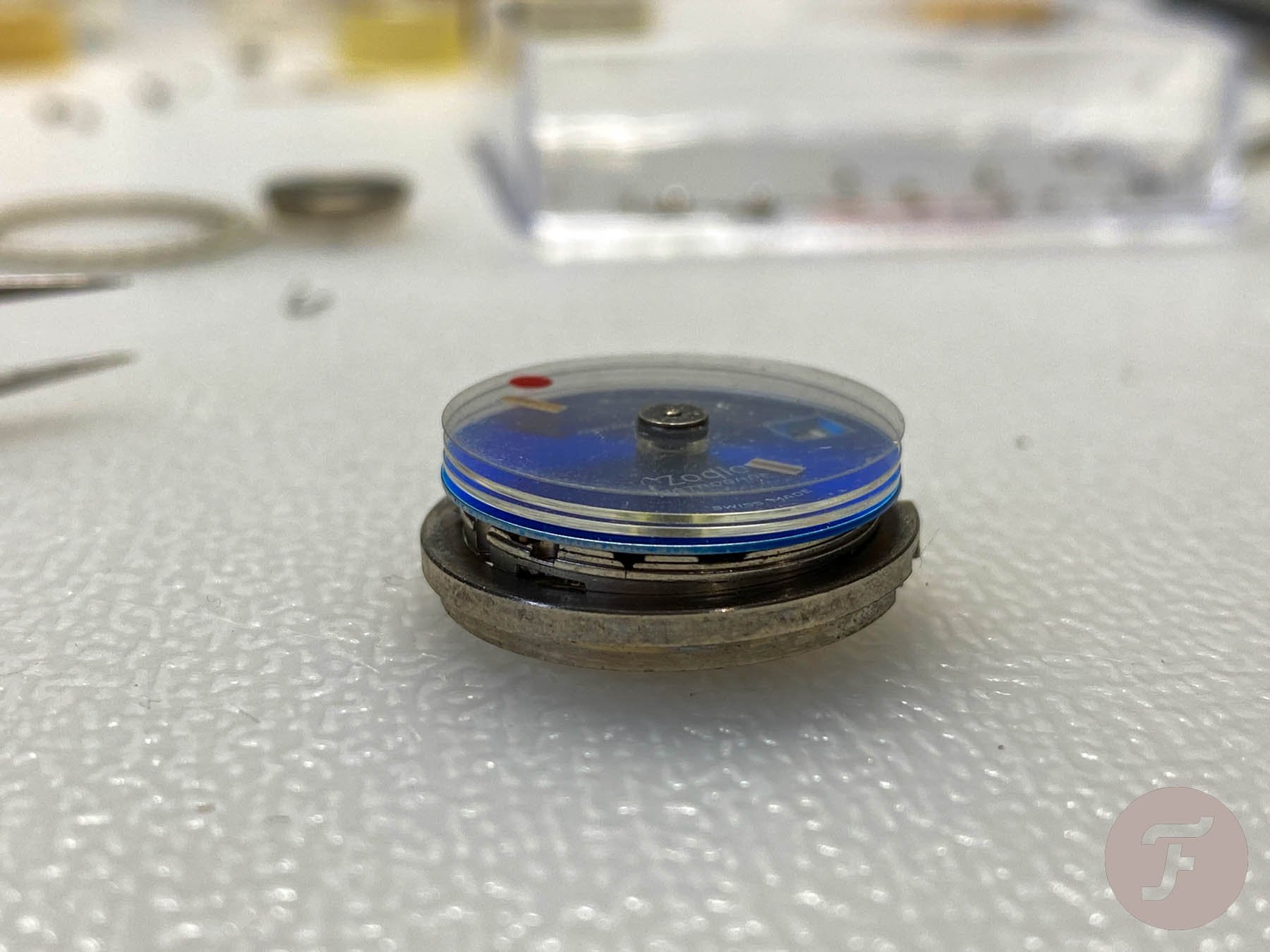#TBT The Mystery Dial 1969 Zodiac Astrographic Watch
I bet you also have a bunch of watches you have always liked but were hesitant to pull the trigger on when the opportunity came. The Zodiac Astrographic is that watch for me.
It was quirky enough to lure me back in for a second and third look every time I saw it pop up on listings here and there. The so-called “mysterious“ dial with floating discs was no revolutionary invention, but unusual enough to be clearly distinguished from other standard three-hander watches. If you add a boldly-shaped case and high-beat movement, you have quite a story to tell. I guess it was only the €500–€1,000 price tag holding me back. Is it worth the money? I will try to answer that thanks to our friends from @10ora10 that sent us The Zodiac Astrographic for a weekly hands-on review.
The Zodiac Astrographic sandwich
There were several case designs available, including the tank style that seemed to be quite popular. I don’t have official production numbers to say which version was the most common, but I prefer the most bizarre shape. The steeply sloping sides with an apparent sunburst effect fit the idea of an unidentified flying object. Or a nuclear reactor if you prefer something more real. The slightly oval curves look very chunky and cumbersome on all available pictures. That was also one of the reasons why I was so hesitant. I was afraid it would wear like a huge nuclear reactor too. And I was so wrong.
The wrist feeling
It didn’t take a day or two as we became instant friends the moment I strapped a vintage aftermarket mesh bracelet on it. I was afraid the Zodiac Astrographic would feel like a “hostile“ object on the wrist, but the opposite proved true. It looks huge when just laying about, but its 40mm diameter is very comfortable. Why such a huge difference between expectations and reality? The perfectly crafted lugs make the watch feel airy. The Astrographic looks like a high and all-encompassing steel garden. If you are looking for a way to fight stereotypes, you hardly find a better vintage piece.
The Astrographic dials
Once you’ve decided on the case shape, you will have to select your dial color. The velvet blue was the only choice for me as it symbolized the astral theme the most. As you can see, the profile is high enough to accommodate the three acrylic discs orbiting like satellites over the sky-blue dial.
The hands are designed as short “bricks“ that are not connected to the center like typical watch hands. They float around the dial and look like spaceships. Except for the red dot second that looks like an orbiting planet. Each disc is visible through the next one. The hour disc sits closest to the dial, the minute disc is above it and the second disc flies on the top. The moment when all three discs are about overlap is quite magical. You can clearly see the different depths they sit at and the overall almost zero gravity constellation attains momentary plasticity.
The problem
There is always (at least) one problem when it comes to vintage watches. When the transparent discs age, they lose some of their transparency. So be prepared for the experience being less vivid than it was decades ago. While with some watches aging only enhances individual charisma, here it’s quite the opposite and I recommend a thorough check. Don’t forget that small particles that managed to slip under the crystal can land on all three levels. While typical hands are thin, here it’s the full disc surface that can collect anything that gets in. In the worst cases, an Astrographic that was left without cleaning can develop unwanted circular scratches that are quite visible.
The problem part #2
Another problem might be the mineral glass that sits a hair higher than the case. The minute track and the Zodiac logo are printed from below, which means that you can’t use any generic replacement if damaged. Unless you want to recreate the transparent label in DIY style, which I do not recommend. The bad news is that a genuine Zodiac replacement is not easy to get. That’s why my smaller Astrographic stays heavily injured with deep scars, waiting for a bit of eBay luck.
Considering how much time the mineral glass polishing process took, I wouldn’t recommend it unless you have endless patience. Richard Askham
Or, spoiler alert, if I ever get into a proper mood I might do what the almighty Richard Askham did. He used increasingly finer grades of emery paper to remove scratches. The final finish was achieved with a damp felt mop charged with cerium oxide. To quote Rich, “considering how much time the entire polishing process took, I wouldn’t recommend it unless you have endless patience.“
The Astrographic SST
On a more positive note, I foreshadowed a bit of “intermediate“ horology as being part of the story. It’s linked to the SST signature on the dial that stands for Split Second Timing. Nothing more than a very original name for a high-beat movement. As the name suggests, instead of five beats per second, the Astrographic runs at ten per second, equaling 36,000 beats per hour. Not bad at all. It works perfectly with the design idea, as the high-beat Zodiac cal. 88D gives the orbiting red seconds dot a smooth sweeping touch.
Shotgun notes
I really like the unusual dial setting with the date at twelve. There is also an interesting quirk of how to quickly adjust the date. Instead of rotating the crown in the second position as normal, the date is advanced by depressing the crown. The Zodiac Astrographic I am testing needs quite some pressure to the crown, but the date switch is swift and precise. Pure joy. If you have a chance, also make a play for the original bracelet, although it may be pricey.
Final thoughts
To find a NOS Astrographic is very rare and those that are available have usually already led full lives. My example shows signs of the problems discussed above but still sits on the very acceptable side. I think I should not ask for the hands-on, as I am hooked after a week. It is the right mix of unseen design and slightly bizarre and bold advanced tech that made the Zodiac Astrographic a watch to talk about when it was first introduced in 1969.
I think this Astrographic featured today won‘t travel back to Zsolt in Budapest, whatever the price will be. I’ll take it as a challenge and an inspiration to get the smaller women’s model back in shape so my wife and I can sport them side-by-side. Happy hunting.

